Researchers look to nature to pull water from the air›››
Welcome to the KUST Review traveler’s guide to the world. If you’re looking for a travel destination that either has been ravaged by climate change or is about to be, this is the brochure for you.
2023 was officially the world’s hottest year on record. The average global temperature for the year was 1.48C warmer than the 1850-1900 pre-industrial average, according to the European Union’s Copernicus Climate Change Service. That’s perilously close to the 1.5C limit set under the 2015 Paris Agreement — certainly close enough to make planning your post-1.5 world travel dreams a reality very soon.
Beat the rush – if not the heat – with our guide to the top 6 destinations.
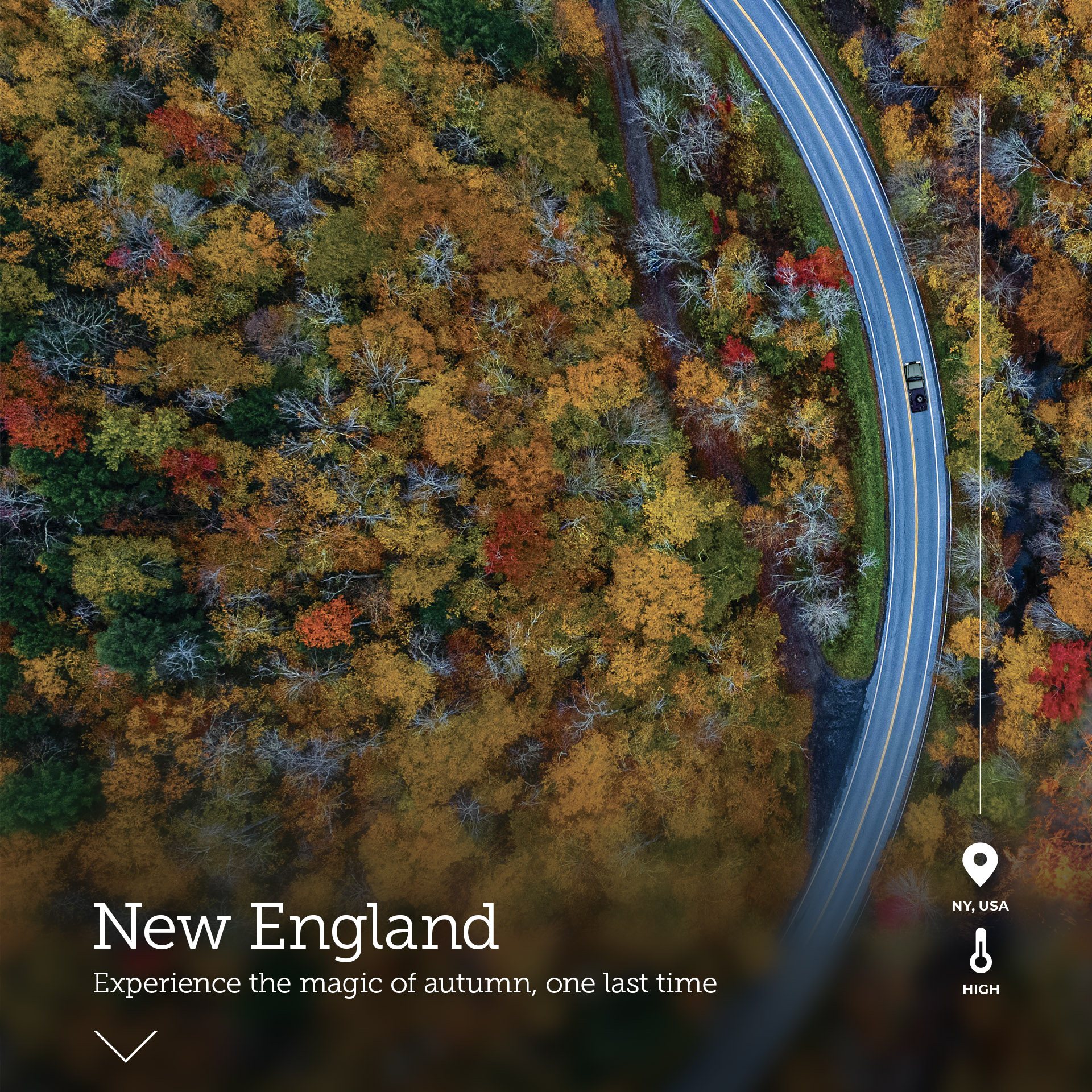
As summer fades, New England transforms into a canvas painted with the fiery hues of autumn. From the rustic charm of Vermont’s country roads to the coastal serenity of Maine, the journey promises a symphony of fall foliage. A classic road trip surrounded by a kaleidoscope of red, orange and yellow leaves could be yours for as long as the trees stay standing.
Global warming-driven increases in hurricanes mean they might not be around for much longer.
Shersingh Joseph Tumber-Davila is a Dartmouth College terrestrial ecosystems ecologist studying the response of ecosystems to global environmental change. He says a single hurricane hitting New England might result in the release of more than a tenth of all the carbon stored in the area’s forests.
As you wander through the autumnal beauty, look around and notice that woodland covers about 75 percent of the New England land area. Take a moment of gratitude for the trees that remove some 16 million tons of carbon dioxide from the atmosphere each year.
Tumber-Davila’s team used computer models to calculate the carbon losses that would occur in storms with 8 to 16 percent higher wind speeds than those of the 10 biggest New England storms of the 20th century. These higher wind speeds are possible as a result of global warming. They found that even a storm of the same wind speeds as the Great New England Hurricane of 1938, which downed 70 percent of standing trees in some areas, could release 120 million tons of carbon if it were to occur today. Make the winds 16 percent faster and that number jumps to 250 million tons.
“The emissions are not instantaneous, however,” Tumber-Davila says. “It takes approximately 19 years for the downed carbon to become a net emission, and 100 years for 90 percent of the downed carbon to be emitted.”
Tumber-Davila also points out that these estimates are conservative, but no matter: 70 percent of the New England forest could end up on the floor, joining the soft rustling of leaves beneath your feet.
Let New England’s fall beauty captivate your senses but maybe don’t count on these forests being a carbon sink for your travel emissions much longer.
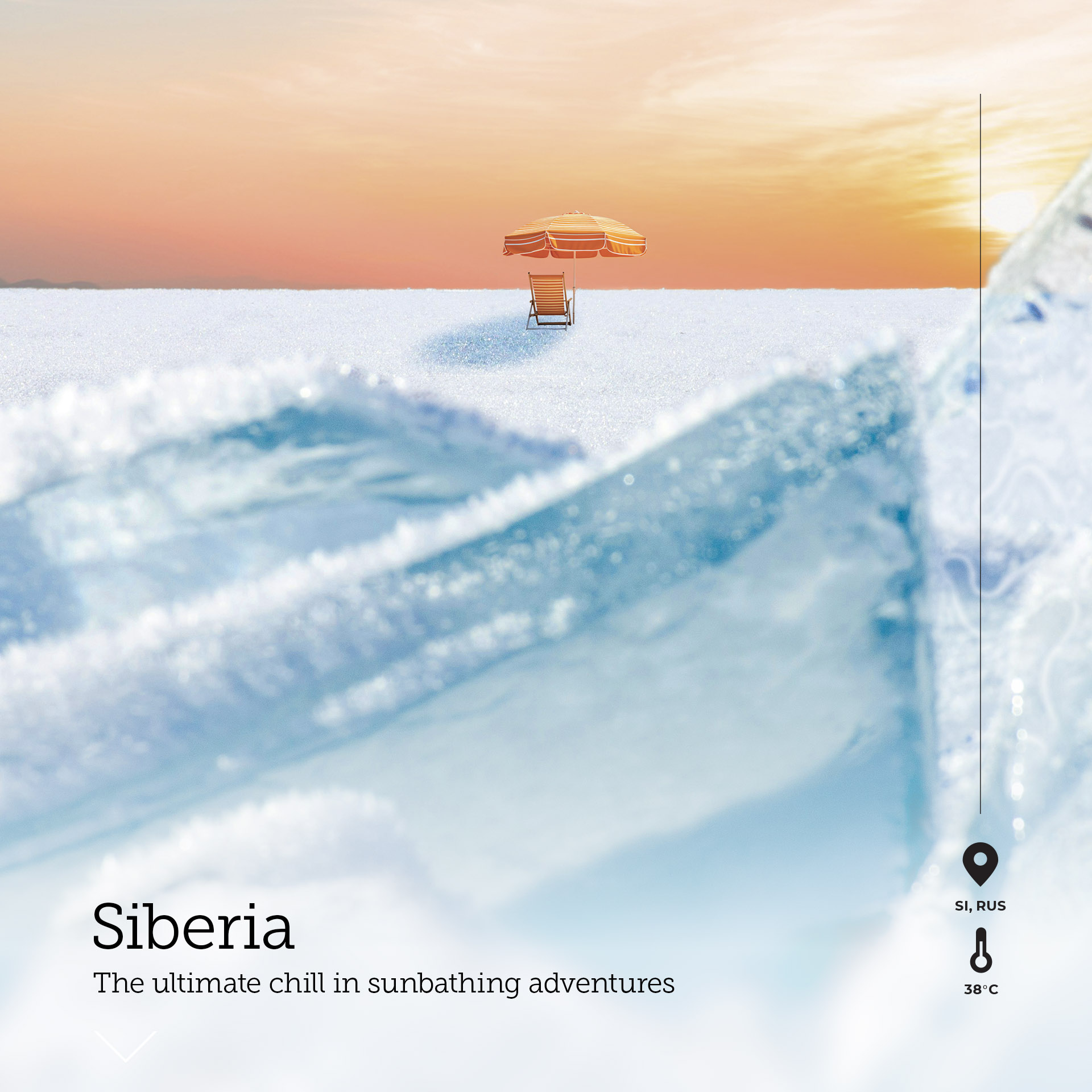
Forget the Caribbean, the Mediterranean is so last season, and who needs the Maldives to stay above water anyway? Siberia is the hottest new destination to catch some rays.
The Arctic is warming faster than any other region on Earth, according to Rashit Hantemirov from Russia’s Ural Federal University: “Siberia is among the regions with the strongest warming worldwide, and heatwaves have reached a disturbing new level in recent years, especially in 2020 when temperatures soared across Siberia to reach a record-breaking 38C inside the Arctic Circle.”
Scientists say “disturbing” — we say “opportunity!”
Be among the first to experience the great Siberian tanning tour across the most sun-soaked, formerly frost-kissed locations the Arctic Circle has to offer. And who says sunbathing is a midday activity? In the far north, the summer brings the midnight sun, giving you 24-hour opportunities to catch those rays.
Bask in record temperatures this summer for the low, low price of devastating, cascading effects on local ecosystems, human communities and the built environment. Remember to get your
shots before you go.
Ancient viruses frozen in the Arctic permafrost could soon be released and unleash a major disease outbreak, and no one wants to be ill on holiday. Anthrax is a killer accessory to a nice tan.
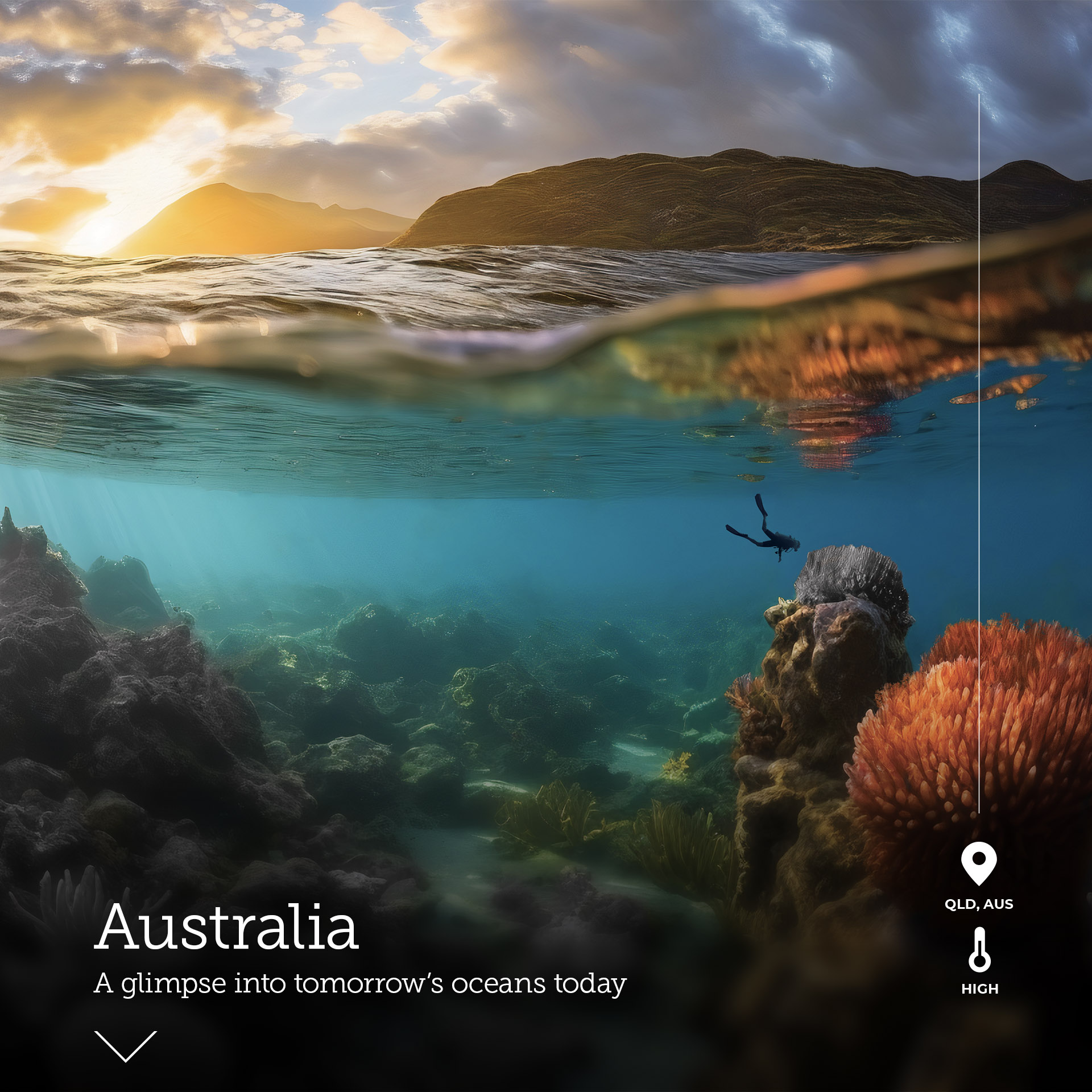
Dive into the future in Australia with a trip to the bleached coral of the Great Barrier Reef. Welcome to the future of underwater adventure, where the vibrant colors of life meet the stark reality of change. Australia’s coral reefs, once bursting with life, now offer a different kind of beauty — a ghostly, otherworldly landscape just beneath the waves.
An estimated 80 percent of the Great Barrier Reef has suffered severe bleaching in rising ocean temperatures, and you can now embark on a guided tour through the most famous underwater graveyard. Our expert guides will narrate the tale of once-thriving coral ecosystems, now standing as silent sentinels of the sea.
Since 2016, the Great Barrier Reef has experienced five mass bleaching events, say researchers at the Great Barrier Reef Marine Park Authority, which monitors the health of the coral. In 2024, the latest event was caused by heat stress and affected two-thirds of the reef. The authority’s chief scientist, Roger Beeden, says it’s too early to say what the full consequences of this event are, but hopes that if conditions cool, much of what’s bleached could recover.
In the meantime, glide over ghostly coral gardens, where the absence of color tells a thousand stories. For an optional extra, take part in one of our neon night dives. As the sun sets, dive into an eerie underwater neon party. Special UV lights reveal the fluorescent glow of the bleached corals, creating an unforgettable luminescent spectacle: nature’s own discotheque!
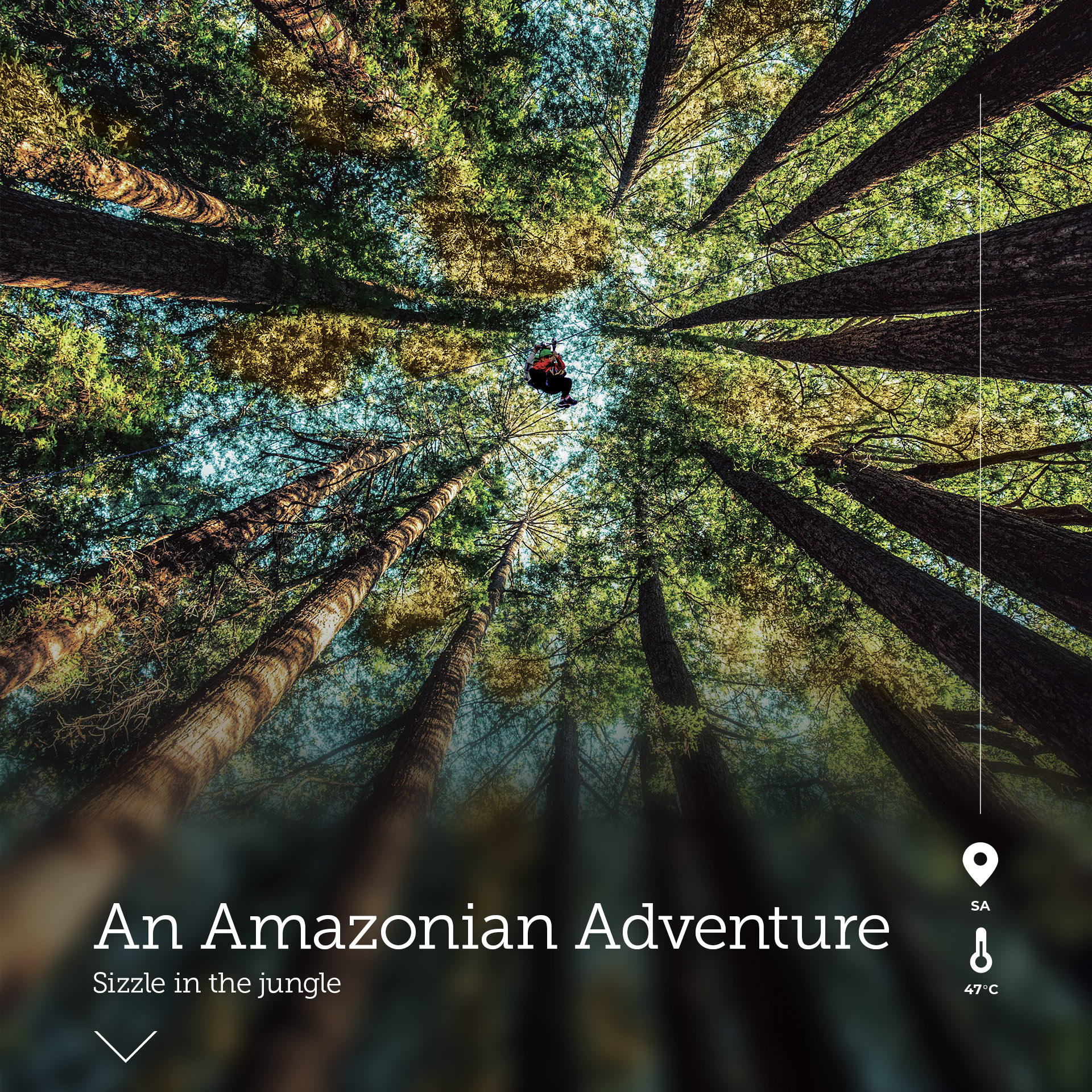
If an autumn trip isn’t an option, you could summer in the rainforest and still experience the fall beauty. Embark on the hottest journey of your life and forget the cool, lush canopies of yesteryear: This Amazonian adventure promises an up-close encounter with the sizzling future of the tropics.
Already, a small proportion of leaves in the canopies of tropical forests are dying from heat stress (about 0.01 percent), but Christopher Doughty at Northern Arizona University is far more pessimistic: “We are predicting total leaf death,” he says. “Even a small change in temperature could greatly impact tropical plant species.” His team placed temperature sensors on leaves in the upper canopy of Amazonian rainforests. As temperatures increase, more leaves are affected, and the more leaves that are affected, the warmer the existing forests become.
After about 47C, leaves can’t photosynthesize as the cells that capture energy from sunlight are too damaged. Plus, in hotter temperatures, the stomata on leaves close to prevent water loss. Without the cooling effects of evaporation — or plant sweat — the leaves get even hotter.
But hey! On this tour, glide through the treetops on a zipline, where the leaves are so sparse, you won’t need to worry about the obstructed views! Witness firsthand — and at speed! — the impact of extreme heat on the rainforest’s once-teeming biodiversity. What fun!
After your thrilling zip across the forest, find your way down to the banks of the Amazon River, now warmer than your average hot tub, not to cool off, but to catch a glimpse of the world-famous pink dolphins. Don’t look too far out to water though: You’re much more likely to spy one washed up dead on the shore.
The dolphins may be on the International Union for Conservation of Nature’s red list of threatened species, but your chances are good to spy a carcass or two. The Amazon basin is experiencing its most intense dry season in more than a decade, and extreme temperatures could be picking off the wildlife.
At least 125 dolphins died in a single Brazilian lake in 2023, but with an estimated 13,000 left in the wild, there’s still time to go dolphin-watching.
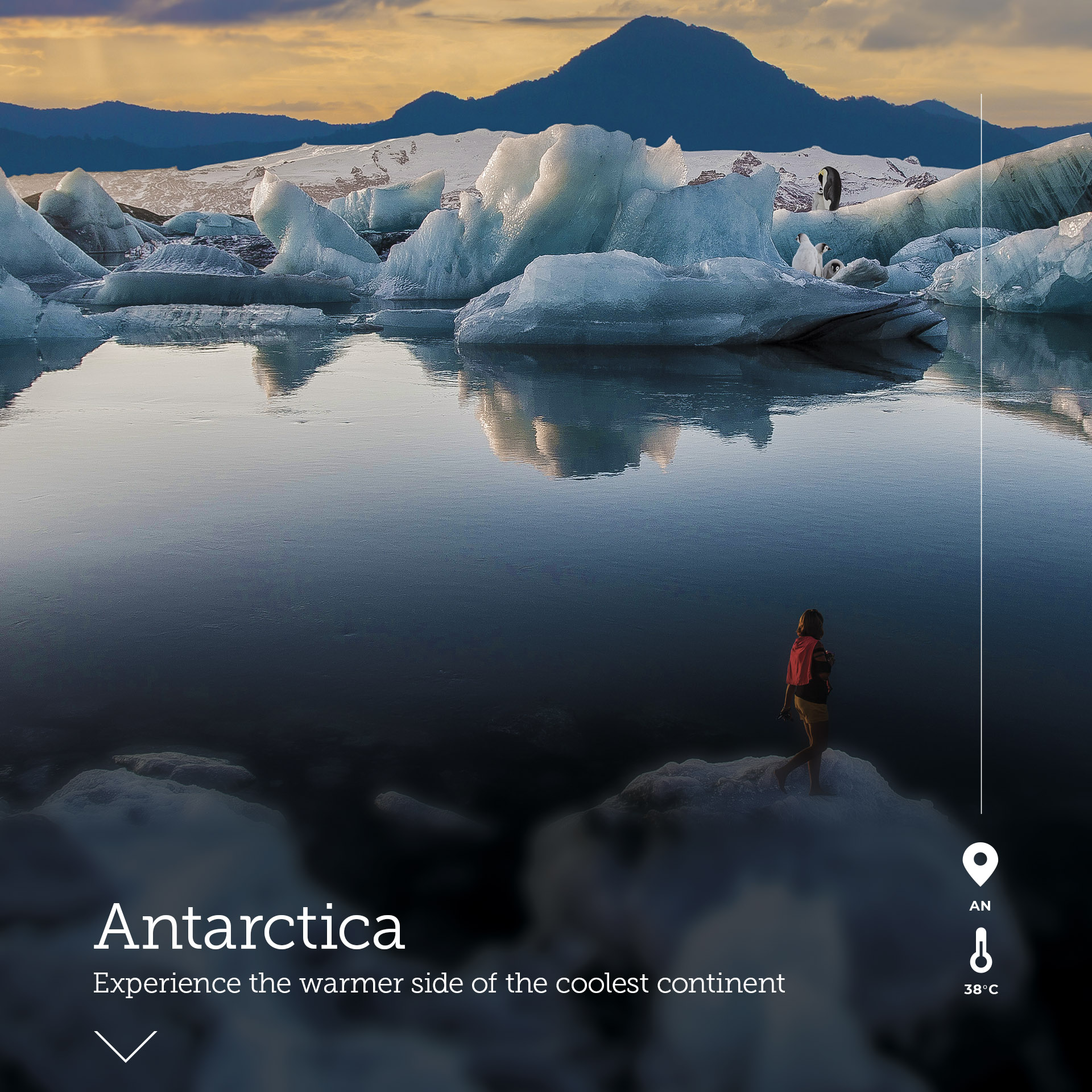
Chill out in the new and improved Antarctica, now with less ice and even fewer penguins!
Leave the bulky parkas and cumbersome snow boots at home: Antarctica is warming up to tourists in a whole new way. Welcome to the world’s most exclusive destination, now more accessible than ever. Long gone are the chilly receptions of the past — say hello to a warmer, more welcoming Antarctic adventure.
Antarctica is melting faster than ever, according to the World Economic Forum, losing 150 billion tons of glacier ice a year. Warmer ocean temperatures melt the ice sheet but also thin the floating ice shelves that hold the ice sheet on the land. As ice shelves lose strength, more ice flows into the sea, raising the sea level and accelerating ice loss. Compared to 2016, the sea ice surrounding Antarctica in 2023 was missing an area the size of Libya.
In March 2022, the most extreme heatwave ever recorded on Earth hit East Antarctica: Temperatures were 38C higher than “normal.” This came as no surprise to Edward Blanchard-Wrigglesworth, part of the research team investigating this event: “The heatwave was skillfully forecast, resulting from a highly unusual weather pattern which produced strong northerly winds and imported warm and moist air from Australia. Weather forecast models predicted the heatwave up to eight days in advance. We found that the heatwave was made 2C warmer by climate change, and we expect future end-of-century heatwaves to be 5 to 6C warmer.”
Sunny days and comfortable nights bring barefoot strolls along the newly formed beaches of the Antarctic coast, where the only ice you’ll find is in your drink. Enjoy the surreal experience of sunbathing where once only penguins dared to tread.
Speaking of penguins, capture the perfect, unobstructed landscape shots in our penguin-less paradise. With these pesky crowds on the decline, you’ll have uninterrupted views of Antarctica’s stunning, changing landscapes.
In 2023, record sea ice loss caused a mass die-off of emperor penguin chicks, prompting concerns the world’s largest penguin species could soon be extinct.
Emperor penguins breed on sea ice rather than on the land. In 2023, the sea ice broke up much earlier than expected, and the fledgling penguin chicks did not have enough time to grow the black waterproof feathers and muscles needed to swim. They fell into the water and drowned or froze: Four out of five colonies suffered a total breeding failure, says British Antarctic Survey’s Peter Fretwell.
“Emperor penguins are an iconic symbol of Antarctica threatened by climate change,” Fretwell says. “Recent efforts to predict emperor penguin population trends from forecasts of sea ice loss have painted a bleak picture, showing that if present rates of warming persist, over 90 percent of emperor colonies will be quasi-extinct by the end of this century. Climate change is considered the only major driver of their long-term population change.”
So grab your swimsuits and prepare to enjoy the new Antarctica with more comfortable temperatures and no pesky penguins underfoot. One dip in the world’s largest outdoor heated pool and you’ll soon forget you’re in the once frozen wilderness.
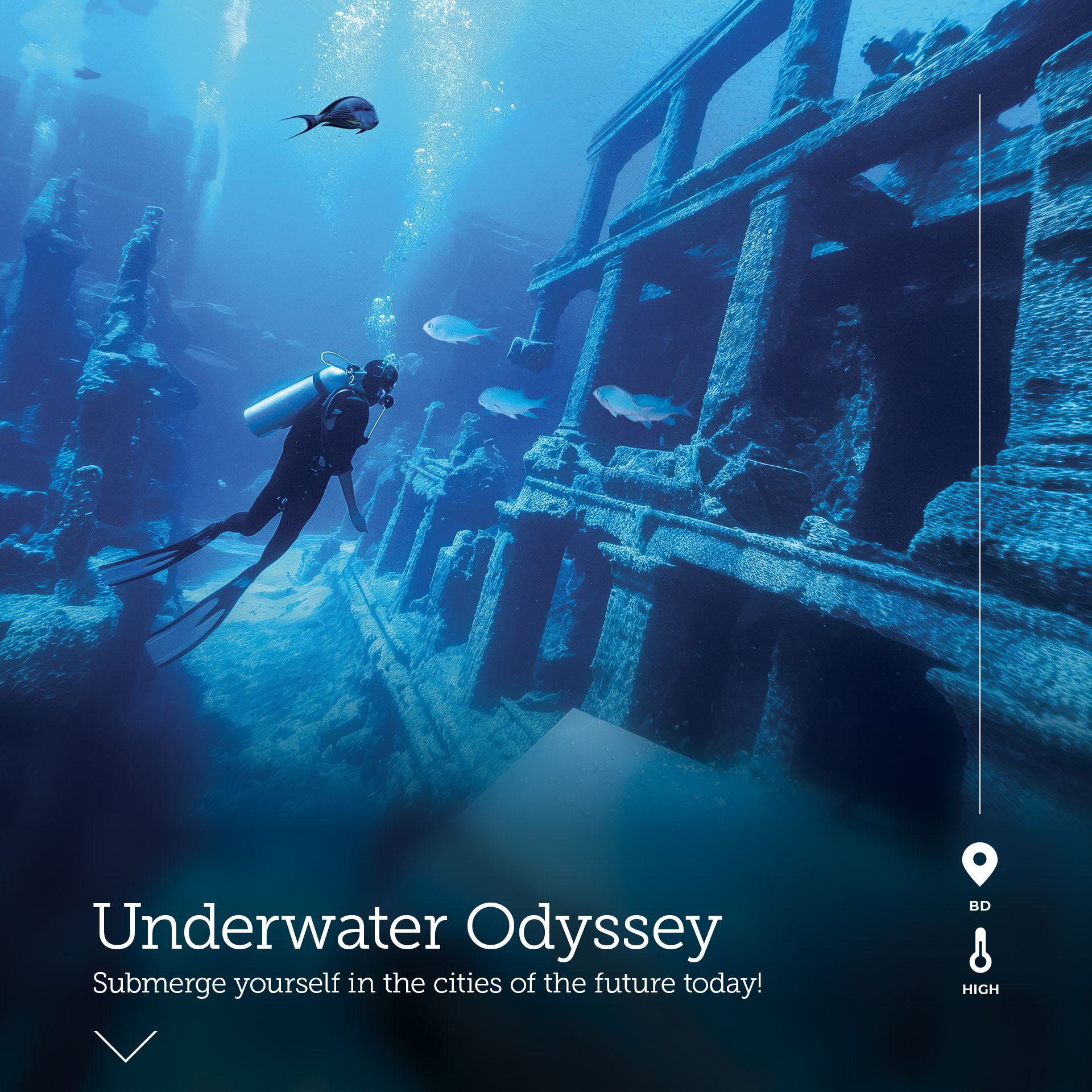
Embark on an unparalleled diving adventure where the treasures of civilization meet the mysteries of the deep. Our exclusive Underwater Odyssey takes you on a submerged journey to the splendors of Bangladesh and Vanuatu in a world tour unlike any other. These destinations are reimagined for a world post-sea-level rise. Strap on your scuba gear and dive into history, culture and the stark reality of our drowning planet.
One of the more dramatic potential outcomes in a warming world is the collapse of the Greenland ice sheet, which could be triggered by a 1.5C rise, and would cause a 7-meter rise in global sea levels. Chad Green, California Institute of Technology, found nearly every glacier in Greenland has thinned or retreated over the past few decades at a rate of 30 million tons of ice per hour. All that water has to go somewhere and that includes the tropical island nation of Vanuatu.
Formerly home to some 260,000 residents, the 82 volcanic islands now sit beneath the waves, creating an 800-mile diver’s paradise. Discover the vibrant coral gardens that have overtaken the once-idyllic archipelago, navigate underwater bungalows and submerged villages, where the fusion of culture and coral creates a breathtaking underwater maze. For the more adventurous, dive into the depths to witness submerged volcanic landscapes, where the fire now dances with the ocean in a steamy, ethereal ballet. The warmth of thermal vents attracts an array of marine life, creating a vivid tapestry of color against the ghostly backdrop of lost lands — perfect for the aspiring underwater photographer!
Sensitive to sea water? Our stop in Bangladesh offers river-water dives through sunken mangrove forests and the drowned streets of Dhaka, where the hustle and bustle of the city have been replaced by the serene silence of the deep. As monsoons intensified and glacial meltwater rushed down from the mountains, severe flood events became more common, hitting the world’s eighth-most populous country. Voyage into the heart of the country that used to sit on the largest river delta in the world, at the confluence of the Ganges, Jamuna and Meghna rivers, and is now a must-visit for fans of ornate architecture home to schools of weaving fish.
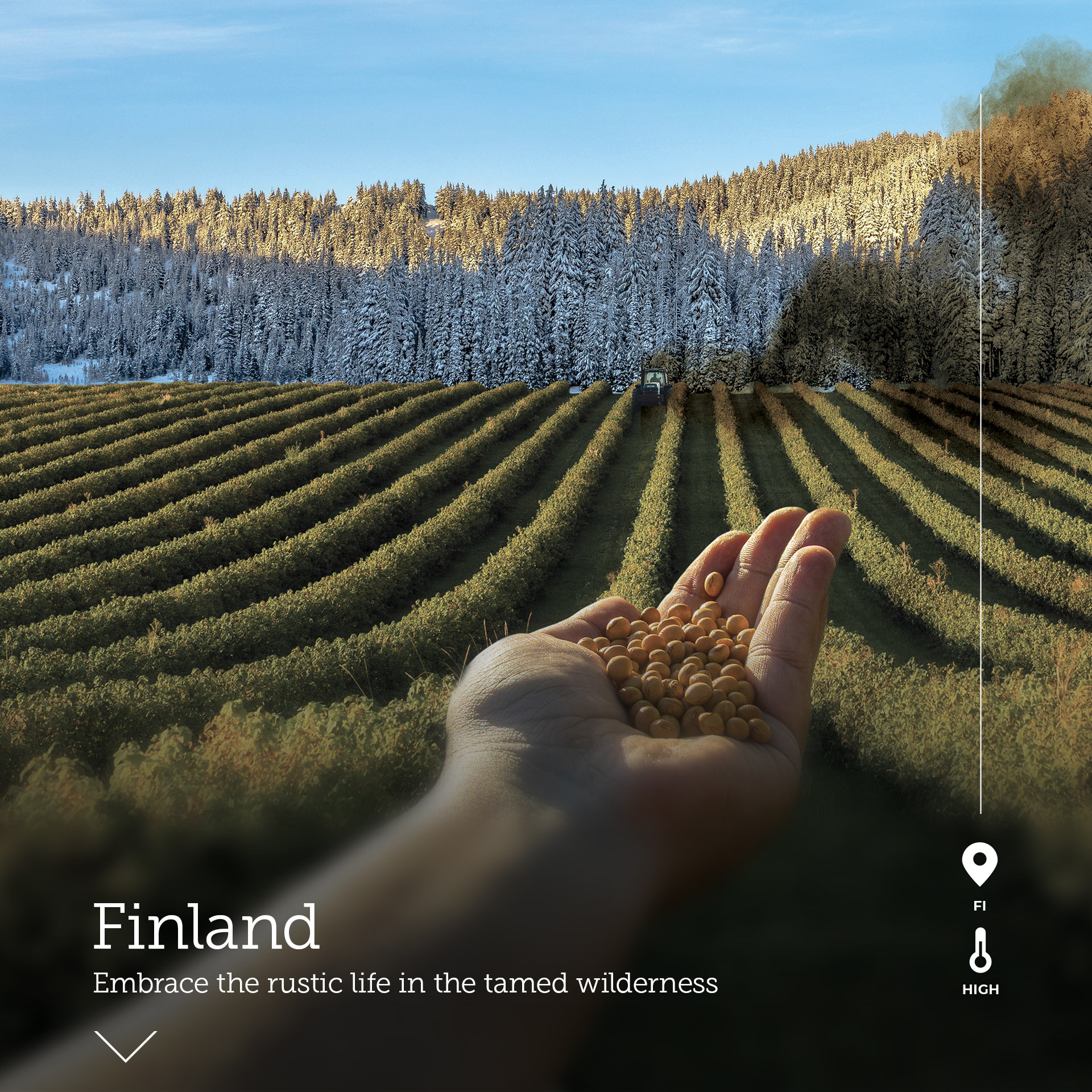
If you want to give back, cultivate change in the land of the midnight sun at this unique Finnish voluntourism farmstay opportunity.
As the world shifts, so too does the landscape of Finland. Once known for its endless forests and frozen tundra, climate change is reshaping parts of this Nordic wonderland into burgeoning farmlands. Dive hands-first into the heart of Finland’s emerging agricultural scene.
Alexandra Gardner, University of Exeter, says as the climate warms, crop production will increasingly shift into wilderness areas: “2.7 million square kilometers of wilderness will become suitable for agriculture within 40 years, equivalent to 7 percent of the total wilderness area outside Antarctica. The increase in potentially cultivable land in wilderness areas is particularly acute at higher latitudes in the northern hemisphere, where 76.3 percent of newly suitable land is currently wilderness. ”
While Gardner’s results don’t account for whether our current crops could be grown in these new areas, you can give it a go as you experience the Finnish countryside like never before. Partake in the cultivation of crops from hearty root vegetables to more exotic produce and witness the green revolution in real-time. Don’t worry about any biodiversity loss or natural habitat destruction: Your farming efforts can only contribute to a greener, more productive farm ecosystem. This isn’t just a holiday: It’s a hands-on contribution to a global challenge.
As climate change redraws the map of what’s possible, your efforts in Finland will help sow the seeds of change.
Global climate change isn’t hanging around. With the 1.5C temperature goal slipping out of reach, take the opportunity now to plan your trip to a warmer world. Our carefully curated trips aren’t just adventures; they’re wake-up calls wrapped in an unforgettable holiday package.
Return with not just memories and souvenirs, but with a renewed commitment to protecting what we have left.
More like this: High seas




